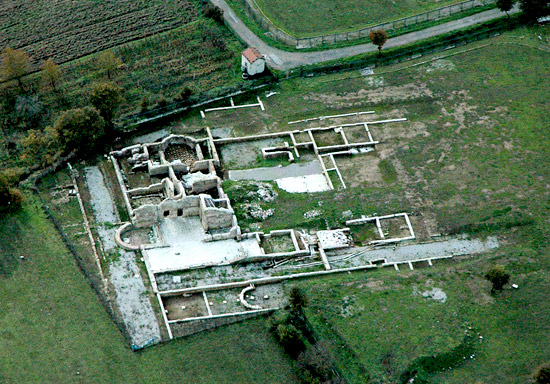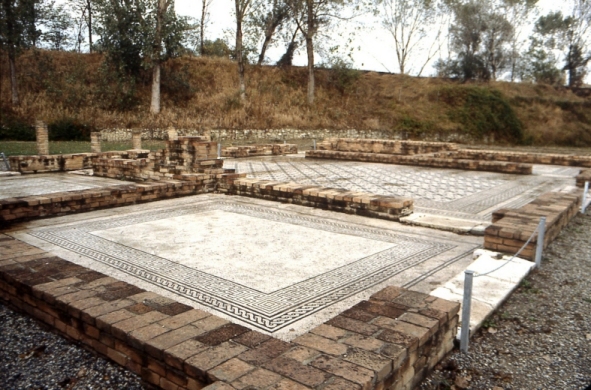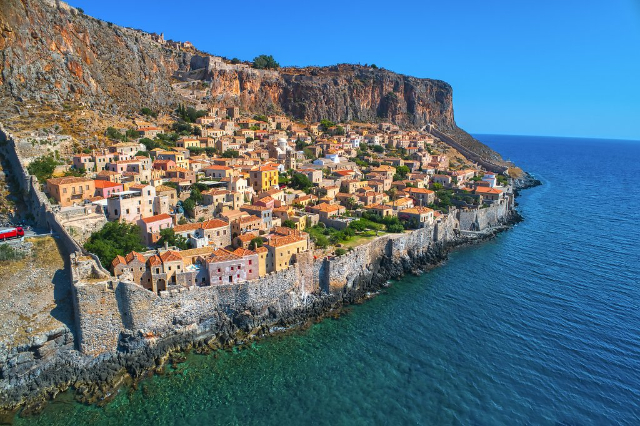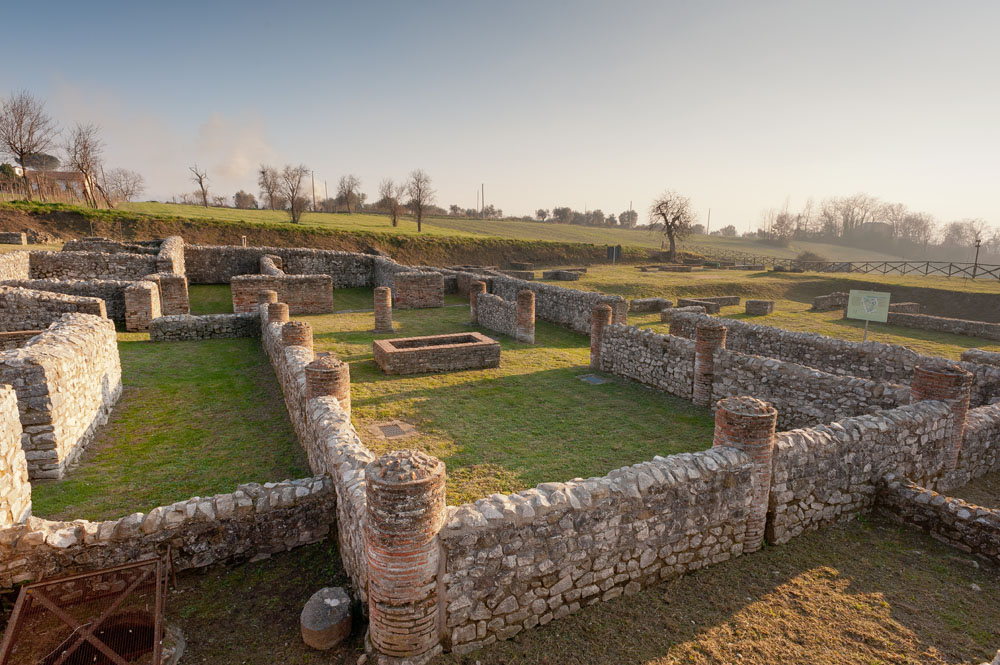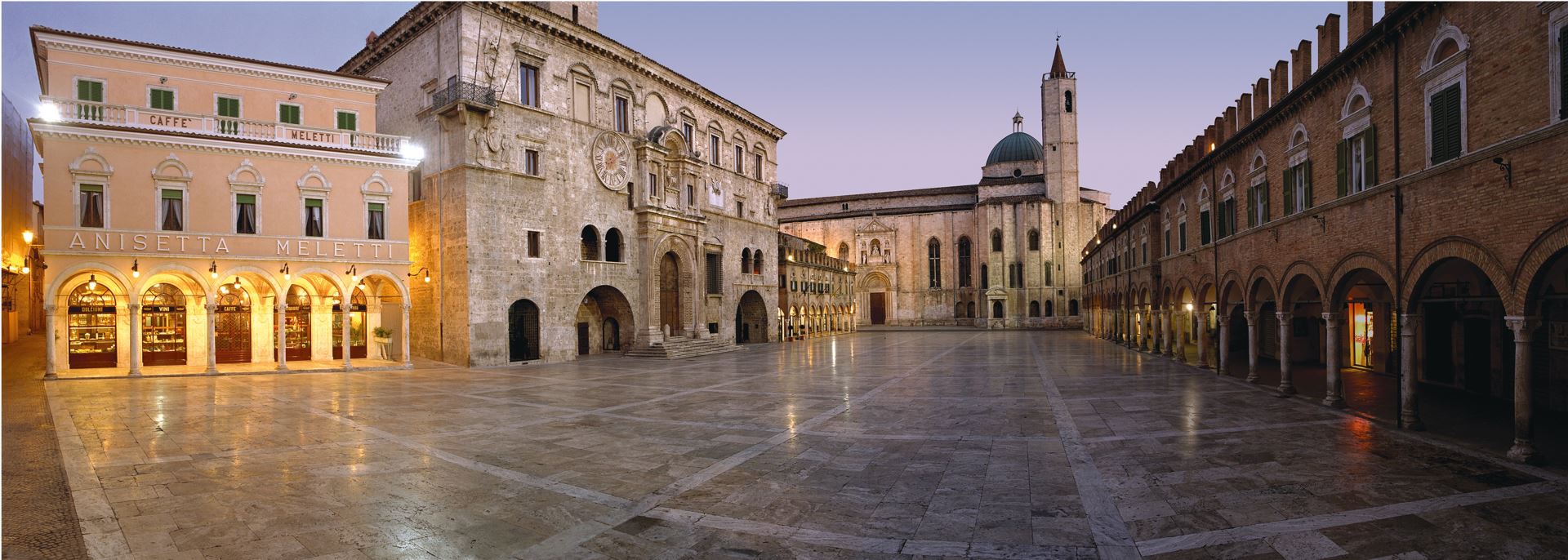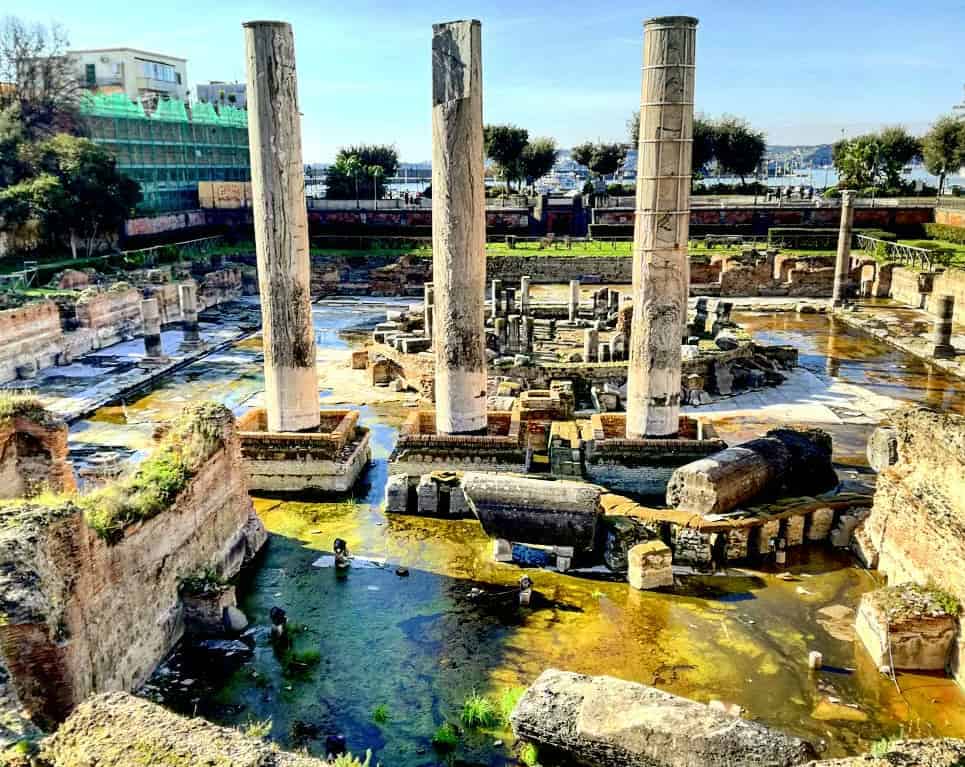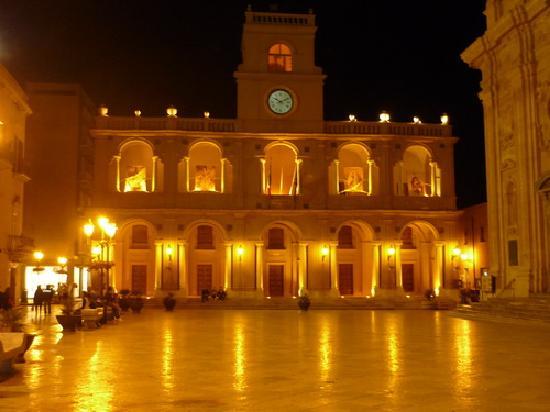The ruins of the old city are located on a hillock between the Sciaura stream and the Agri river.
The center is positioned on an elongated fluvial terrace, raised and defended on four sides by escarpments cut by the Agri, the Sciaura and minor watercourses, and overlooks the Pertusillo lake, in a breathtaking landscape setting.
The urban layout of the city was very simple, with three main roads and a series of small streets that intersected the main streets. The ancient city was surrounded by a wall three kilometers long with six doors.
Of the remains of the Roman Grumentum, three monumental complexes remain. The first consists of a theater of the Augustan age, two small temples of the imperial age and a patrician domus, the "house of mosaics".the second complex corresponds to the area of the ancient Forum; on the north side rises the so-called "Capitolium" and on the south side the presumed "Caesarion". Other public buildings stood on the west side and the remaining perimeter was surrounded by arcades. The third complex consists of the remains of the amphitheater, built in the first century BC and modified in the imperial age.
The route begins with a visit to the structures of the aqueduct that entered the city from the southern side of the plateau, and conveyed the water collected about 5 km south (on the slopes of the hill on which stands Moliterno) and transported on structures in elevation along the countryside grumentina in a castellum aquae of which there are few ruins.
The urban system was organized since the founding of the city according to a regular pattern of roads (three decumans intersected orthogonally by various hinges), the pavement was redone in the second century. AD, and the decumanus maximus, along which face many monuments, is preserved intact for large tracts.
2. Near the entrance of the archaeological park is located the theater, built in Julio-Claudian age and restored in Severan age, and located astride two blocks.
The theater of Grumentum, as in general the Roman theater, consists of three parts, closely linked together to form a solid organism centripetal: the cavea, the orchestra and the scene. The cavea, self-supporting, 46 meters wide, and welded to the scene with corridors (parodoi) covered, developed entirely in elevation and then rested on masonry supports with buttresses. Currently it is preserved for a height (9 meters) corresponding more or less to half of the original. The external facade was constituted by a double row of arches, which supported the inclined plane with the seats, placed in stone steps, today almost completely disappeared. The seats were accessed by steps located inside the covered ambulatory that ran immediately behind the outer arcade. Two overlapping semi-circular corridors, covered with cross vaults, allowed spectators access to the entire cavea, divided from bottom to top in three orders of seats (infima, media and summa cavea), reserved for citizens of progressively decreasing rank. Four staircases (scalaria) ascended from the orchestra and divided the cavea into five wedges. The steps date back to the original structure and are supported by a massive concrete structure.
Five other covered corridors, two parodoi and three vomitoria, arranged in a fan shape transversally to the cavea, allowed direct access to the orchestra, or to the lower rows of tiers, separated from the others by a stone barrier and reserved for the ordo decurionum, or at least the most important personalities of the city.
The orchestra was probably used in part by the actors, but it could also be an appendix of the cavea: inside it were to be placed the seats reserved for the most eminent personages of the city (proedria), separated from the back steps by a low wall (balteus).
In front of the orchestra, and raised about a meter and a half above the level of this was the stage, a wooden board supported by beams. The back wall served as a monumental setting for the recitation. The scenic building, of a rather complex type, is characterized by the presence of three doors (porta regia in the center and portae hospitales on the sides), which, in addition to constituting the bottom of the stage (pulpitum), served to put the latter in communication with the scene and with the open area to the north; therefore, from these came out the actors. The scaenae frons was divided into three large exedras, in the center of which opened the three doors.
The prospectus of the scene rose on two floors, and was covered, together with the stage, by a roof sloping towards the outside. The original project provided for a porticoed square (porticus post scaenam) at the back of the scene.
3. On the porticoed area behind the scene of the theater, probably also used as a gymnasium, faces the back of Temple A, in gray limestone, whose main entrance was located on the side of the decumanus maximus. The sacred building is configured as a small temple of Italic type, because raised on a high podium: it is likely that it was used for the worship of Harpocrates, Egyptian deity, because near it was found a marble torso representing a child, perhaps identified with the Egyptian deity. This would attest to the presence of the Egyptian cult in Grumentum.
4. Continuing along the decumanus maximus, you reach the entrance of the domus of mosaics, one of the most valuable complexes of the entire city, the residence of a very important character in the history of Grumentum.
The house is a single-family dwelling with a rectangular plan (30 x 60 meters), is oriented northwest – southeast, or perpendicularly to the decumans of the city, and overlooks the central decumanus, from which it is accessed through the main entrance, while other accesses are present along the north and south sides of the house. The domus presents the typical scheme of the Roman house with atrium and peristyle: on the side of the road there are stores (tabernae).
The southern half presents in succession the entrance (fauces), atrium with a basin for the collection of rainwater (impluvium), porticoed garden (peristyle): the latter leads to three living rooms – dining rooms (triclinia), with walls and ceiling plastered and painted, and mosaic floors in black and white and polychrome, with geometric and plant motifs. In the atrium there is an apsidal niche with marble-lined walls, and polychrome mosaic floor, intended to house a statue probably connected to the worship of the gods protectors of the house (lararium). Around the atrium there are various rooms, such as the alae, bedrooms (cubicula), a small room (oecus) and a latrine.
To the northeast of the atrium three other rooms of representation are paved, the first with white mosaic with a central panel with marble inlay (opus sectile), the second with black mosaic, the third with white mosaic with a central panel occupied by a fountain.
The northern half of the house consists of small rooms, probably used as bedrooms (cubicula) in the northeastern area, and service rooms in the northwestern area (kitchens, bathrooms, storerooms and rooms for servants). The service area of the house was accessed from the back, through a driveway.
At the beginning of the second century. A.D. dates the construction of the house, on Republican buildings, while at the turn of the third and fourth centuries. A.D. were made numerous interventions of restoration and beautification, and at this stage should be ascribed the realization of the mosaics.
Not far from the domus of the mosaics is the Temple B, from the cult not identified.
5. Continuing, you reach the so-called Republican Baths, which in reality were in operation until the fifth century. AD, of which are visible
